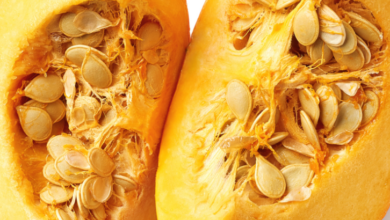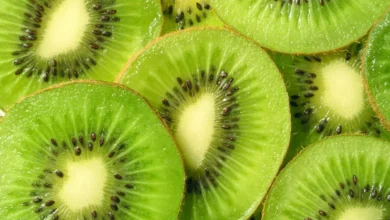What Is The Difference Between Pollination and Fertilization?

If you’ve ever been curious about how plants create new life, the answer lies in the processes of pollination and fertilization. These two stages are essential for many plants to reproduce. Let’s dive into what each of these processes involves and how they are different from each other.
Pollination and fertilization are closely linked, but they are not the same thing. Both are crucial for a plant to make seeds, but they happen at different times and in different ways. In this article, we’ll look at what makes these processes special in the world of plant reproduction.
Table of Contents
- Exploring the Process of Pollination
- Helpers in Pollination
- The Journey of Pollen
- The Magic of Fertilization
- Joining of the Male and Female Parts
- Growing into Seeds
- Spotting the Differences: Pollination vs. Fertilization
- When and Where They Happen
- Combining the Parts
- Each One’s Role
- How Plants Manage Reproduction
- In Summary
- Frequently Asked Questions
- Can pollination occur without fertilization?
- Are all flowers able to self-pollinate?
- How do plants that rely on wind make sure pollination occurs?
- What’s the role of insects in pollination?
Exploring the Process of Pollination
Think of pollination as the first step in plant matchmaking. It’s about getting the pollen (tiny grains that come from the male part of the flower, called the stamen) to the female part of the flower (called the stigma).
Pollen can move from a stamen to a stigma in the same flower, which is called self-pollination. It can also go between flowers on the same plant, or even to flowers on a different plant, which is called cross-pollination.
Helpers in Pollination
Many things can help with pollination, and they can be living (biotic) or non-living (abiotic). Living helpers include insects like bees, butterflies, and beetles, and animals like birds and bats. They usually move pollen around by accident while they’re looking for food or moving through flowers.
Wind and water are examples of nonliving helpers. They carry pollen from flowers that might not attract living helpers because these flowers might not have bright colors or smells to draw attention.
The Journey of Pollen
When pollen grain lands on a stigma that’s ready for it, it starts to grow. A pollen tube forms and works its way down to the ovary of the flower. This tube lets the male part in the pollen (the male gametes) meet the female part (the female gametes or eggs) in the ovules (little structures within the ovary).
The Magic of Fertilization
Fertilization is what happens after pollen makes its way to the ovary. It’s when the male and female parts come together to create a zygote. This zygote will grow into an embryo and eventually a new plant. This fusion happens in the ovules, where the female eggs are.
Joining of the Male and Female Parts
When the pollen tube gets to the ovary, it brings the male parts to the eggs. One male part joins with an egg to make a zygote. At the same time, another male part might join a central cell to make something called the endosperm, which is food for the growing zygote.
Growing into Seeds
After the zygote is formed, it begins to divide and grow into an embryo. Meanwhile, the endosperm will keep dividing too, providing food for that embryo. This all leads to the making of seeds, which hold all the details needed to start a new plant. The ovary where the seeds are can turn into a fruit, which helps spread the seeds around.
Spotting the Differences: Pollination vs. Fertilization
When and Where They Happen
Pollination and fertilization have their own specific times and places. Pollination is the movement of pollen from a stamen to a stigma. Fertilization, on the other hand, happens when the male and female parts meet and join within the ovules, deep inside the ovary.
Combining the Parts
Pollination is about moving pollen. It doesn’t include the joining of the male and female parts. Fertilization is all about that important fusion, where they come together to start a new life as a zygote.
Each One’s Role
For a flower to make seeds, pollination has to happen first to get the male parts to the ovary. But just having pollination doesn’t always mean fertilization will happen. Everything has to be just right, like having the right partners and good conditions for the magic to happen.
How Plants Manage Reproduction
Different plants have their own ways of making sure pollination and fertilization happen. Pollination brings the male and female parts close so they can mix, which is good for having different plant families. Fertilization is the final goal of reproduction, making sure the parts come together to create seeds.
In Summary
Even though pollination and fertilization are both part of making new plants, they have unique jobs. Pollination moves pollen to where it can meet the female parts, and fertilization is the actual combining of those male and female parts into something new.
When we know about these steps, we can better understand and marvel at how plants keep life going on Earth. It also shows us how all the different helpers and methods play a role in the successful making of new plants.
Frequently Asked Questions
Can pollination occur without fertilization?
Yes, sometimes pollination happens, but it doesn’t lead to fertilization. This can be due to mismatched parts or bad conditions, so no new plant grows.
Are all flowers able to self-pollinate?
Not every flower can pollinate itself. Some flowers need pollen from another flower to reproduce. Others have ways to make sure they can self-pollinate.
How do plants that rely on wind make sure pollination occurs?
Plants that depend on the wind make lots of small, light pollen grains that spread easily. They usually have special parts to catch as much pollen as they can.
What’s the role of insects in pollination?
Insects, such as bees and butterflies, help a lot with pollination. They carry pollen from one flower to another without meaning to while they search for food.







